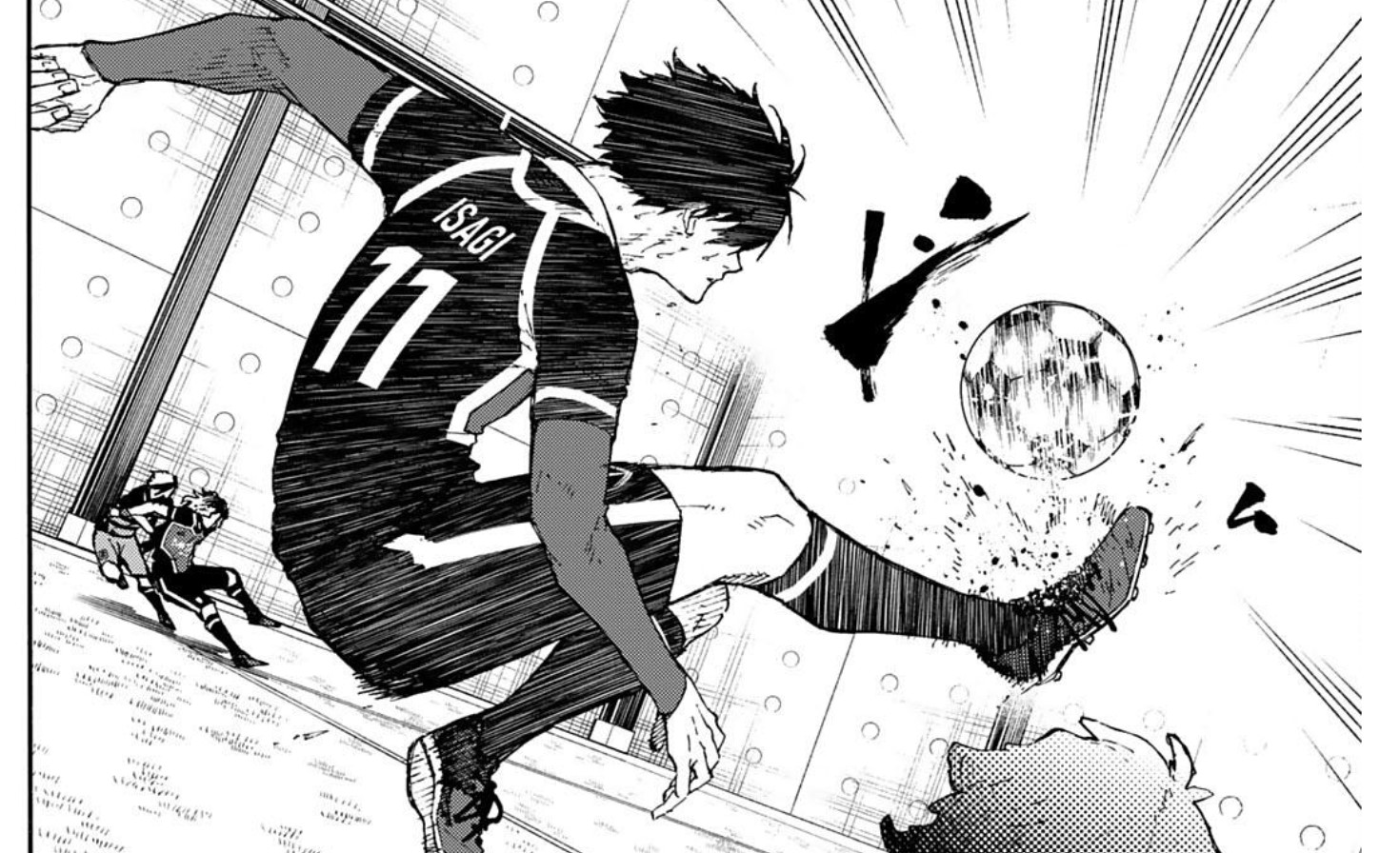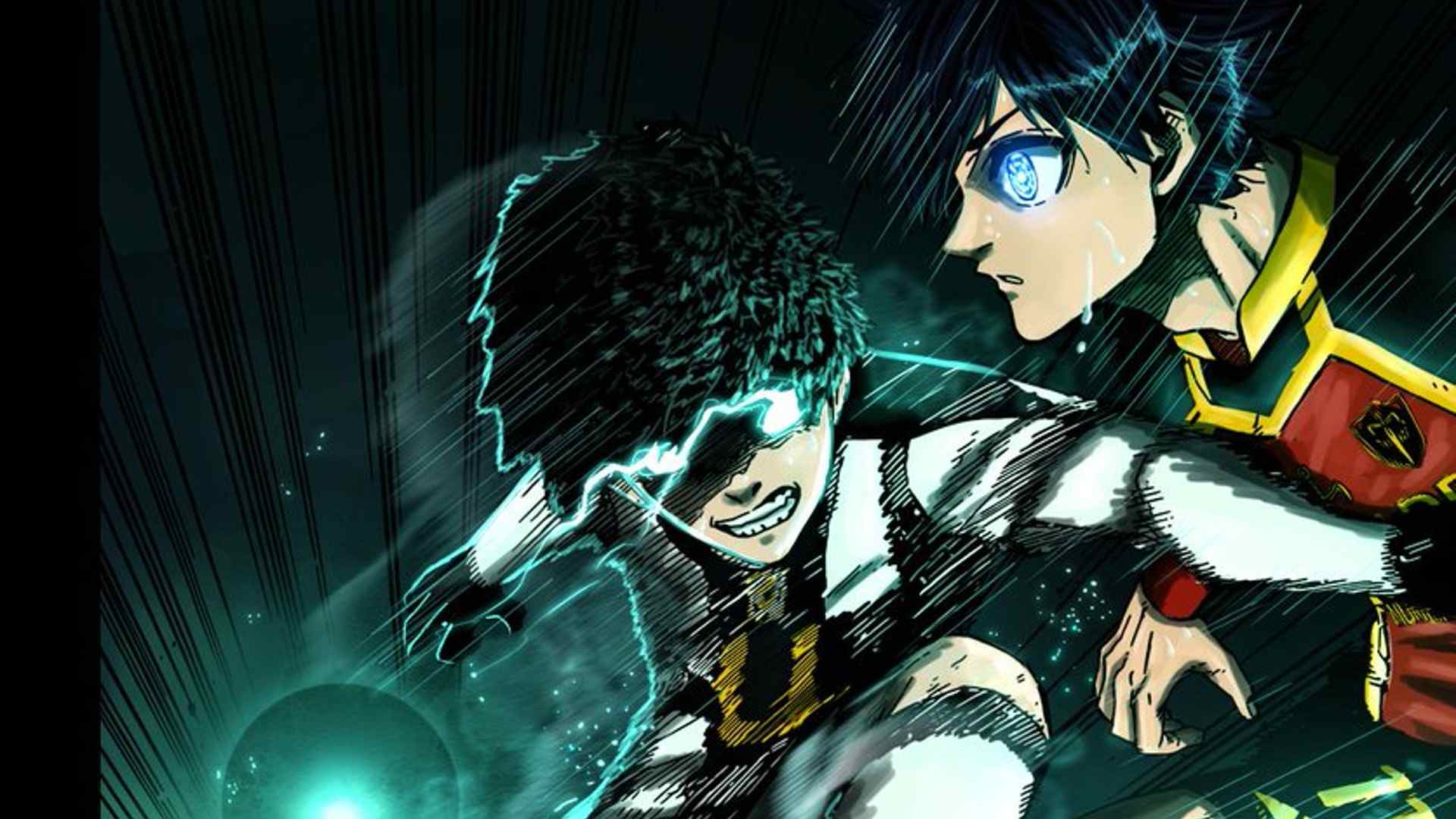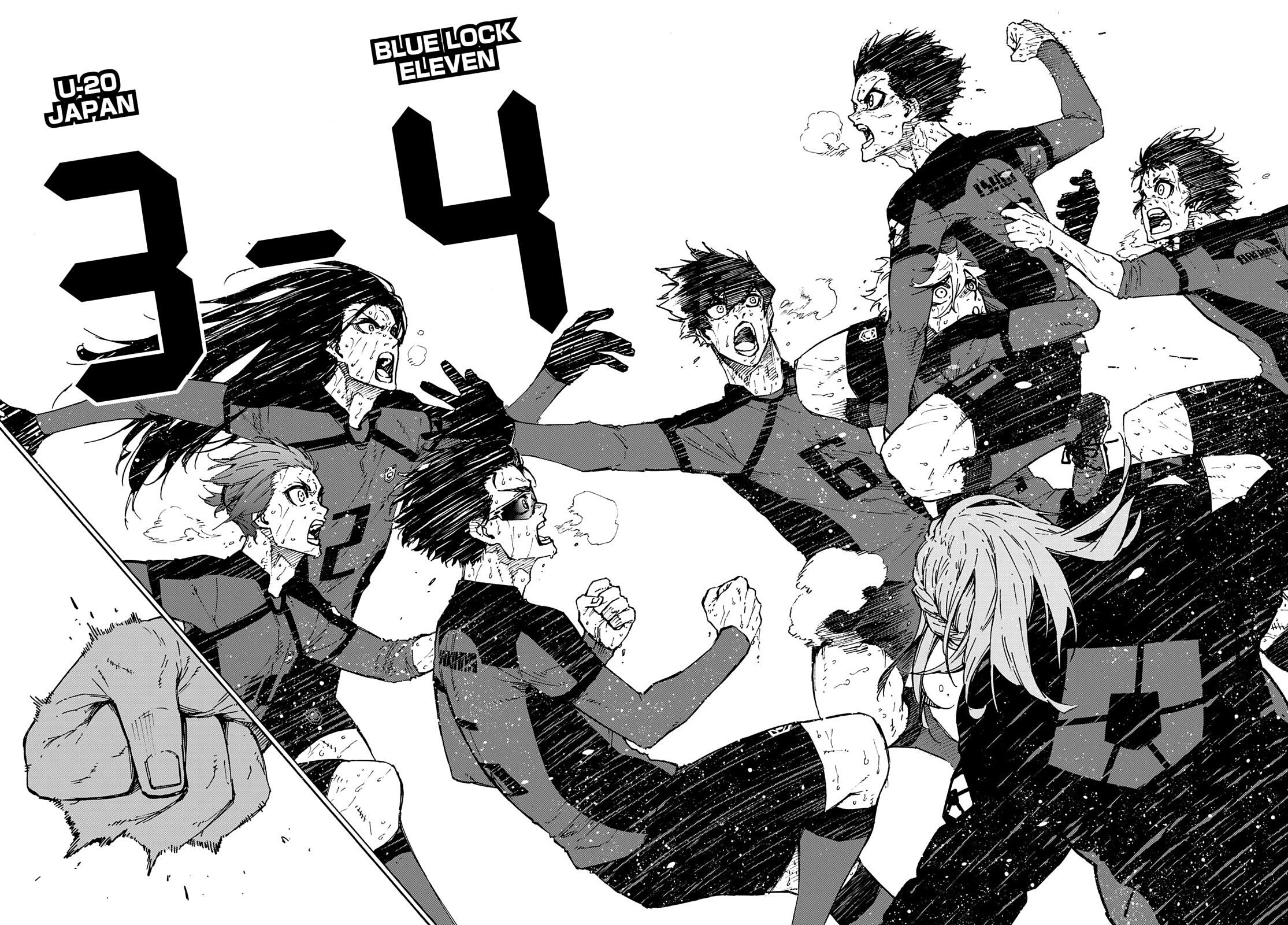Blue Lock Chapter 40 marks a significant turning point in the rigorous selection process. As the competition intensifies, the stakes are raised higher than ever before, compelling the aspiring strikers to confront their inner demons and unleash their true potential.
The chapter delves into the intricate strategies employed by each team, showcasing their tactical prowess and determination to secure a spot in the coveted Japan U-20 World Cup squad. With tensions running high, alliances are tested, and rivalries reach their boiling point.
Plot Summary

Chapter 40 of Blue Lock, titled “Blue Lock Man #10,” continues the intense training regimen at the titular facility. The chapter focuses on the development of Isagi Yoichi and his growing determination to become the world’s best striker.
The Blue Lock Chapter 40 is a thrilling chapter that sets the stage for intense football action. Isagi Yoichi’s determination to become the best striker in the world is put to the test. While this chapter leaves readers eagerly anticipating the next, they may also enjoy the captivating Charlie Wade Chapter 5000-6000 . This epic saga follows Charlie Wade’s extraordinary journey, filled with thrilling twists and turns.
Returning to Blue Lock Chapter 40, the tension is palpable as Isagi faces off against his formidable opponents. The outcome of this match will have a profound impact on his future and the fate of the Blue Lock project.
Isagi’s Determination
Isagi reflects on his past performance in the previous matches and acknowledges his shortcomings. He realizes that to achieve his goal, he must improve his physical abilities, refine his techniques, and develop a keen understanding of the game. With newfound resolve, Isagi vows to push himself to the limit and become the best version of himself.
Blue Lock Chapter 40 takes a thrilling turn as the Blue Lock players face off against their rivals in an intense match. Meanwhile, in the world of espionage, spy x family chapter 80 unveils a captivating chapter that follows the adventures of the Forger family.
Returning to Blue Lock, Chapter 40 promises a nail-biting conclusion to the match, leaving readers eagerly anticipating the outcome.
The Physical Exam
The chapter introduces a series of rigorous physical tests that the Blue Lock players must undergo. These tests assess their speed, agility, strength, and endurance. Isagi excels in some of the tests, but he struggles with others. However, he refuses to give up and continues to push himself.
Team Division, Blue lock chapter 40
After the physical exams, the players are divided into teams for a series of practice matches. Isagi finds himself on a team with Nagi Seishiro, Reo Mikage, and Chigiri Hyoma. The team quickly realizes that they have a unique combination of skills and strengths, and they work together to develop a cohesive strategy.
Practice Match
The practice match is a fierce battle between Isagi’s team and another team led by Barou Shoei. Isagi uses his newfound determination and refined techniques to lead his team to victory. However, he also faces setbacks and challenges along the way.
Character Analysis

In Chapter 40 of Blue Lock, the characters’ actions and interactions play a pivotal role in shaping the narrative and driving the development of the characters. Let’s delve into the motivations and actions of key characters and how they contribute to the overall story.
Ego and Ambition
- Isagi Yoichi: Isagi’s relentless pursuit of becoming the best striker drives his actions throughout the chapter. He challenges himself to adapt to Blue Lock’s rigorous training and confront his weaknesses head-on.
- Bachira Meguru: Bachira’s innate talent and flamboyant style set him apart. His desire to play freely and create chaos on the field motivates him to seek out unconventional strategies and push the boundaries of the game.
Rivalry and Competition
The intense rivalry between the players fuels the narrative. Blue Lock’s competitive environment pits the players against each other, forcing them to confront their limits and strive for excellence.
Blue Lock Chapter 40 takes a fascinating turn, as Isagi and his team face a formidable opponent. Their strategies and teamwork are put to the test, and they must find ways to overcome their adversaries. To gain insights into their opponent’s tactics, they turn to chapter 31 voc rehab , where they analyze previous matches and identify patterns.
This knowledge proves invaluable as they devise a plan to counter their opponents and secure victory. Back in Blue Lock Chapter 40, the battle continues with heightened intensity, and Isagi’s team faces a pivotal moment.
- Rin Itoshi: Rin’s arrogance and belief in his own superiority drive him to challenge Isagi and assert his dominance. His unwavering determination to prove himself as the ultimate striker adds an extra layer of tension to their rivalry.
- Barou Shoei: Barou’s physical prowess and ruthless nature make him a formidable opponent. His unwavering ambition to become the king of the field fuels his relentless pursuit of goals.
Adaptation and Growth
The characters’ ability to adapt and grow is a crucial aspect of their development. Blue Lock’s rigorous training forces them to confront their weaknesses and evolve as players.
- Chigiri Hyoma: Chigiri’s past injury and subsequent rehabilitation journey symbolize his resilience and determination. His ability to overcome his limitations and regain his speed is a testament to his unwavering spirit.
- Kunigami Rensuke: Kunigami’s initial struggles with his ego and teamwork gradually give way to a more mature and balanced approach. His ability to recognize his own shortcomings and adapt to the demands of Blue Lock showcases his growth as a player.
Teamwork and Cooperation
Despite the competitive nature of Blue Lock, the players also recognize the importance of teamwork. Their ability to collaborate and support each other is crucial for their success.
- Nagi Seishiro: Nagi’s exceptional spatial awareness and ability to anticipate his opponents’ moves make him a valuable asset to any team. His willingness to work with others and adapt to different playstyles highlights his versatility.
- Reo Mikage: Reo’s cunning and strategic mind make him an effective playmaker. His ability to control the flow of the game and create opportunities for his teammates demonstrates his leadership qualities.
In conclusion, the actions and motivations of the characters in Chapter 40 of Blue Lock drive the narrative and contribute significantly to the character development. The rivalry, competition, adaptation, growth, and teamwork showcased in the chapter lay the foundation for future conflicts and character arcs as the players continue their journey towards becoming the ultimate strikers.
Team Dynamics

The chapter showcases the contrasting dynamics between the various teams, each employing distinct strategies and tactics that shape the match’s outcome.
Teams like Team Blue Lock and Team White Room exhibit a cohesive and organized approach, prioritizing teamwork and calculated plays. Their coordinated efforts and clear communication allow them to effectively execute complex strategies, resulting in a smooth and efficient flow of the game.
Team Blue Lock’s Tactical Ingenuity
- Leveraging Isagi’s spatial awareness and adaptability, the team devises intricate passing patterns that exploit gaps in the opposing defense.
- Their ability to seamlessly transition between possession-based play and counter-attacks keeps their opponents on edge, forcing them to adjust their strategies constantly.
- The team’s collective understanding of each player’s strengths and weaknesses enables them to create scoring opportunities through targeted passes and well-timed runs.
Team White Room’s Calculated Precision
- In contrast, Team White Room emphasizes individual brilliance and precision. Their players possess exceptional technical skills and an uncanny ability to anticipate opponents’ moves.
- They rely heavily on calculated passes and off-the-ball movements to create scoring chances, exploiting any lapse in concentration from the opposing defense.
- Their focus on individual brilliance allows them to create unpredictable and explosive plays that can catch opponents off guard.
Tactical Analysis: Blue Lock Chapter 40

The Blue Lock facility’s mission is to cultivate a new generation of Japanese strikers, with the goal of winning the World Cup. In order to achieve this, the players are subjected to a rigorous training regimen that includes both physical and mental challenges. One of the most important aspects of this training is tactical analysis, which involves studying the strengths and weaknesses of both the individual players and the opposing teams.
By understanding the tactical nuances of the game, players can develop strategies that will help them to exploit their opponents’ weaknesses and maximize their own strengths. In Chapter 40 of Blue Lock, we see several examples of how tactical analysis can be used to gain an advantage on the pitch.
Team Tactics
One of the most important aspects of tactical analysis is understanding the different team formations that can be used in a soccer match. Each formation has its own strengths and weaknesses, and the choice of formation will often depend on the players available and the style of play that the team wants to adopt.
In Chapter 40, we see two teams using very different formations. Team A is using a 4-4-2 formation, which is a very attacking formation that emphasizes width and speed. Team B, on the other hand, is using a 5-3-2 formation, which is a more defensive formation that emphasizes solidity and control.
The 4-4-2 formation is well-suited to teams that have fast and skillful wingers, as it allows them to get into wide areas and create chances for the strikers. The 5-3-2 formation, on the other hand, is well-suited to teams that have a strong defense and are looking to counterattack.
Individual Tactics
In addition to team tactics, individual players can also use tactical analysis to gain an advantage on the pitch. This involves understanding their own strengths and weaknesses, as well as the strengths and weaknesses of their opponents.
In Chapter 40, we see several examples of how individual players can use tactical analysis to their advantage. For example, Isagi Yoichi is able to use his understanding of the opposing team’s defense to create space for himself and score a goal. Bachira Meguru is able to use his dribbling skills to create chances for his teammates.
Tactical analysis is a vital part of soccer, and it can be used to gain an advantage on the pitch at both the team and individual level. By understanding the strengths and weaknesses of both their opponents and themselves, players can develop strategies that will help them to win matches.
Closing Summary

Blue Lock Chapter 40 concludes with a breathtaking climax that leaves readers on the edge of their seats. The outcome of the match not only determines the fate of the individual players but also shapes the future of Japanese football. As the dust settles, the true nature of the Blue Lock experiment is revealed, leaving both the characters and the audience questioning the boundaries of ambition and the pursuit of greatness.
